|
McCloud River Railroad : Passenger Operations:
Early Passenger Trains |
|
|
The McCloud River Railroad started running passenger trains from the time line first opened for business. In addition to passengers going to and from McCloud,
the town also became the railhead for a vast part of California to the south and east, and the railroad interchanged a lot of people and express business with
the stage routes serving that territory. Recorded passenger counts from those first years are spotty, but the company's 1900 report to the California Railroad
Commission recorded 1,632 passengers generating $1,478.10 in revenue, plus an additional $97.23 in Wells Fargo & Company express business. The passenger operations
expanded to Bartle, and the 1906 timetable showed two round trip passenger trains over the road, one operating Bartle-Upton and the other an evening train on the
McCloud to Upton line. The railroad also handled periodic special excursion trains as well. |
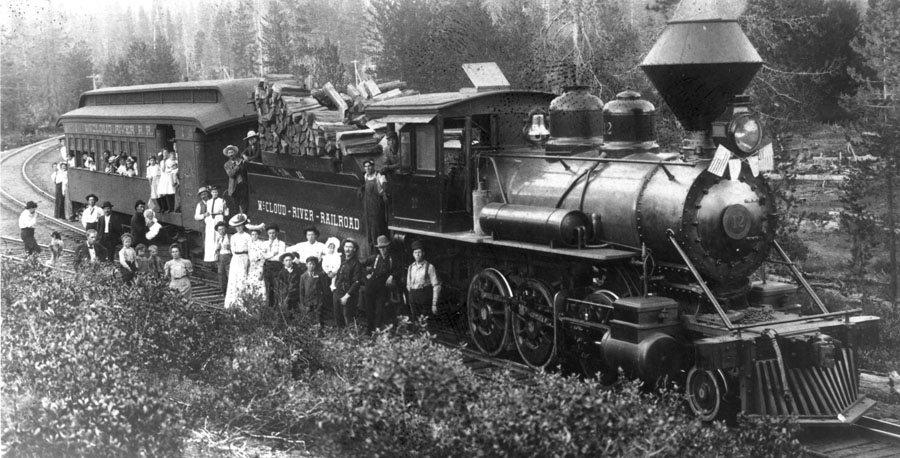 |
|
Locomotive #12 with what appears to be a July 4th passenger train. Travis Berryman collection. |
The passenger trains remained a small but important part of McCloud's business. Passenger counts increased to an average of 75 people per day by 1910, and by 1917
the timetable showed two round trips between McCloud and Sisson and one round trip between McCloud and Bartle each day. Passenger counts continued to increase, reaching
the neighborhood of 20,000 people by 1920. However, in the early 1920s improving highways started siphoning the passenger business away from the railroad, especially
after an auto stage line started offering McCloud to Mt. Shasta City service in direct competition with the railroad. Passenger counts plummeted, down to less than 8,000
people by 1927. The railroad dropped all scheduled service east of McCloud and decided to get into the bus business directly, buying two in 1927 and one in 1928. By 1928,
buses operated two of the three round trips west of McCloud while the train handled the third. |
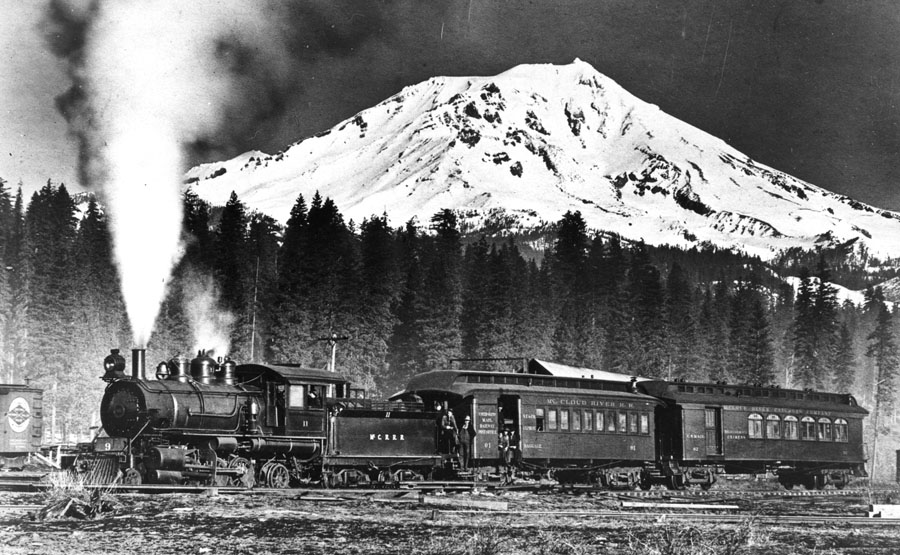 |
|
Locomotive #11 with two passenger cars in the McCloud yard. Travis Berryman collection. |
The opening of the new line to Lookout Junction caused the railroad to reestablish passenger train service to Bartle. The company did print tickets good for passage all the way
to Lookout Junction, perhaps in anticipation of GN's promise to run passenger trains over that line, but never did offer any scheduled service beyond Bartle. In 1933 the railroad
experimented with replacing passenger trains on at least part of its route with a Model A station wagon specially equipped with a Goodyear Tire & Rubber designed pneumatic
tire outfitted with a metal flange. The car proved successful on an unspecified 24-mile stretch of the railroad. |
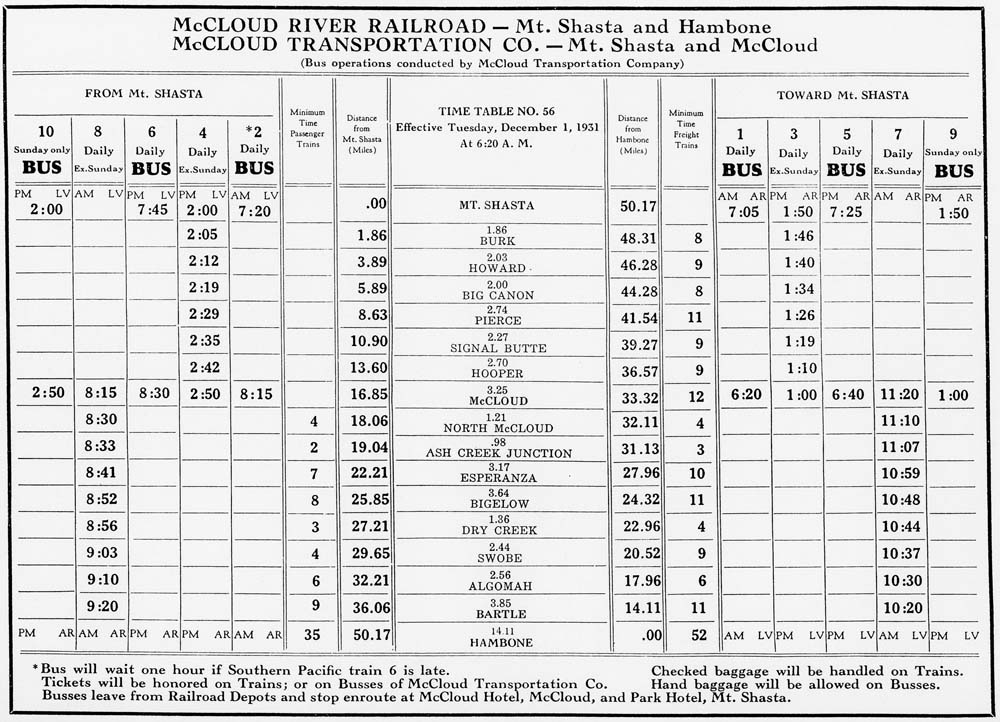 |
|
1931 Timetable showing bus and passenger service. |
However, the downward slide continued, with annual passenger counts averaging well less than a thousand people by the middle 1930s. Scheduled passenger rail service ended by the late
1930s, and by 1939 the railroad had converted its last passenger equipment to work service. Buses continued to provide the service thereafter. |
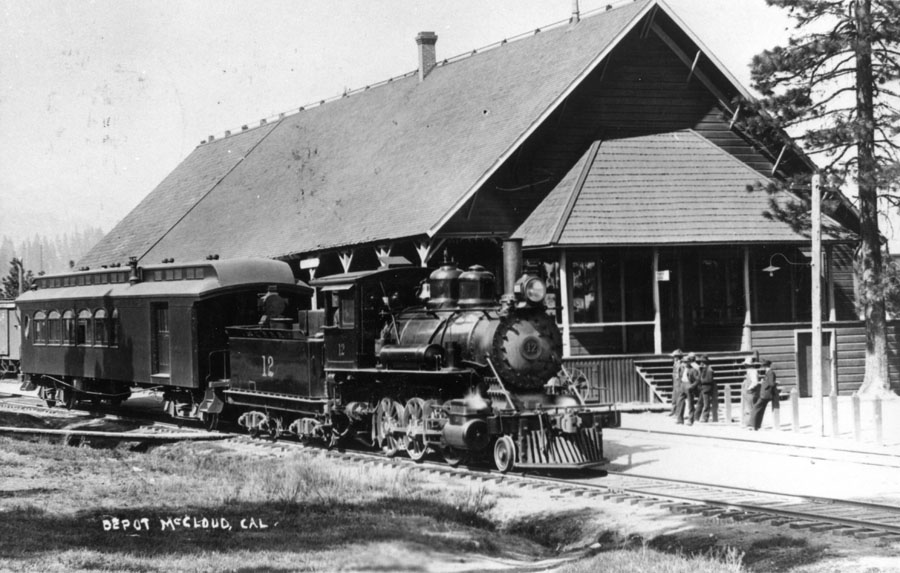 |
|
Postcard view of the #12 at the McCloud depot. Travis Berryman collection. |
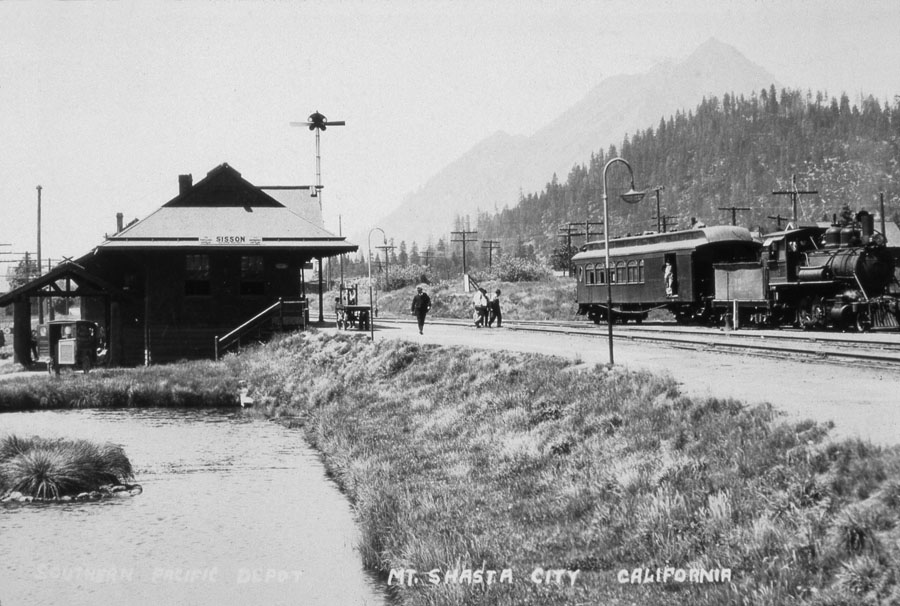 |
|
Another postcard view of the #12, this time at SP's Sisson depot. Jeff Moore collection. |
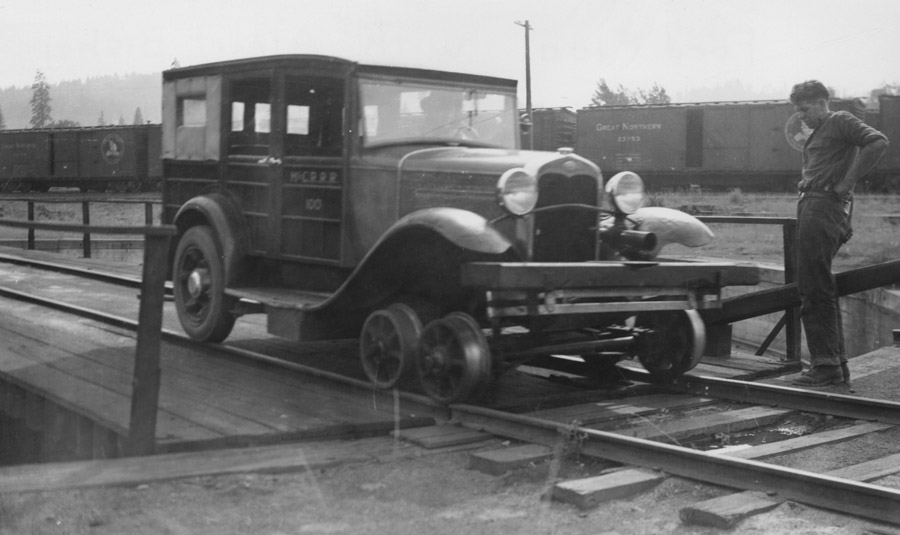 |
|
Al Bishop posing with the #100 sedan on the McCloud turntable. In passenger service, this car averaged 24 miles per gallon fuel economy carrying ten passengers and 17 while pulling a trailer. Ray Piltz photo, Travis Berryman collection. |
 |
|
A later application of the flange equipped pneumatic tires. Jeff Moore collection. |
|
|